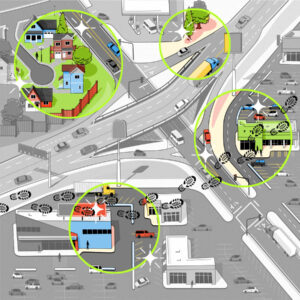Physical Address
304 North Cardinal St.
Dorchester Center, MA 02124
Physical Address
304 North Cardinal St.
Dorchester Center, MA 02124

A century ago, Americans threw stones at cars, called drivers “remorseless murderers,” and erected “Death-O-Meters” to track traffic fatalities. Today, we can’t imagine life without automobiles—a dramatic shift that reveals how an entire society can be conditioned to accept massive environmental and human costs as normal.
The numbers are staggering: more Americans have died in car crashes than in all U.S. wars combined. The average driver spends over $750,000 on vehicles in their lifetime. If the world’s SUVs were a country, they’d rank as the fifth-largest carbon emitter globally, ahead of Japan. Yet unlike other deadly activities, driving has achieved what researcher Ian Walker calls “motonormativity”—a collective blind spot that makes us apply looser moral standards to cars than anything else. His studies show 75% of people oppose smoking in populated areas due to fumes, but only 17% object to driving in the same spaces.
This acceptance didn’t happen naturally. Auto companies spent decades manufacturing our “love affair with cars” through targeted campaigns, coining terms like “jaywalking” to blame pedestrians for traffic deaths and funding Boy Scout programs to shame street-crossers. They sold us a chrome-wrapped fantasy of freedom while building a car-dependent infrastructure that made alternatives nearly impossible.
But change may be coming. Recent books criticizing car culture are finding mainstream publishers, COVID-era outdoor dining showed us car-free possibilities, and New York’s new congestion pricing has already reduced traffic and improved air quality. As more people struggle with car payments and climate concerns grow, the forgotten history of resistance to automobiles is becoming relevant again.